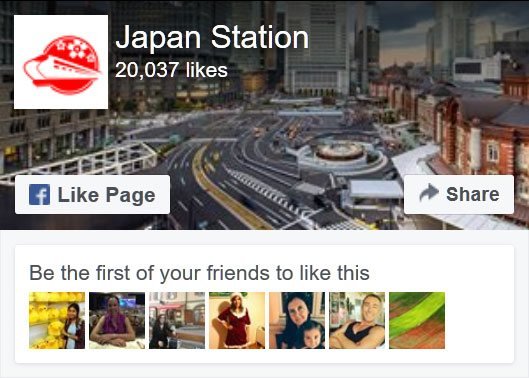The Kaigan Line is a subway line in Kobe that runs between Sannomiya-Hanadokeimae Station and Shinnagata Station. This line links the lively Sannomiya district with many attractions in central Kobe such as Kobe Chinatown, the waterfront Meriken Park, and the Harborland commercial complex.
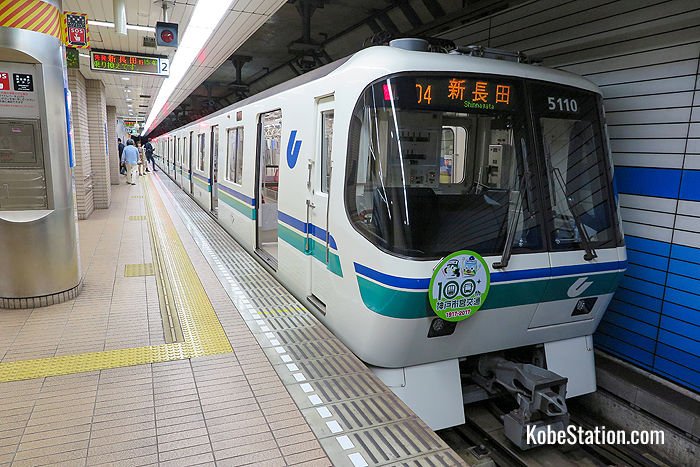
A train bound for Shinnagata Station at Sannomiya-Hanadokeimae Station
The Kaigan Line is one of three lines run by Kobe Municipal Subway. On the subway network’s signage and route maps the Kaigan Line is
color-coded blue. The other subway lines are the Seishin-Yamate Line which is color-coded green and the Hokushin Line which is color-coded brown. The Kaigan Line and the Seishin-Yamate Line are connected at Shinnagata Station, and the Seishin-Yamate Line connects with the Hokushin Line at Shin-Kobe Station.
Table of Contents
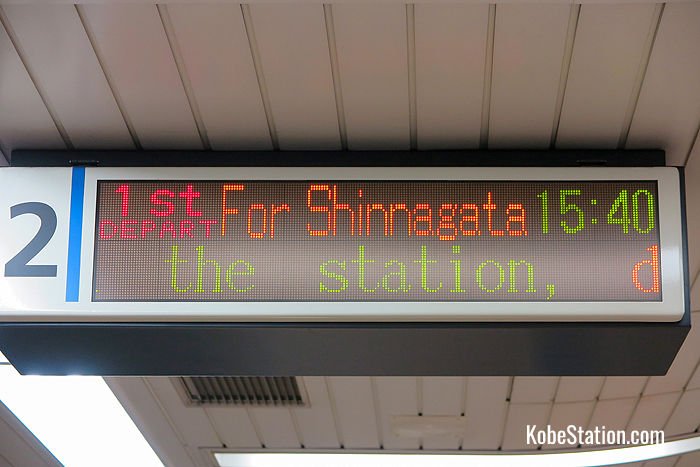
Departure information at Sannomiya-Hanadokeimae Station
Key Destinations
There are 10 stations on the Kaigan Line.
Sannomiya-Hanadokeimae – Kyukyoryuchi-Daimarumae – Minato Motomachi – Harborland – Chuo-Ichibamae – Wadamisaki – Misaki-Koen – Karumo – Komagabayashi – Shinnagata
The key destinations on the Kaigan Line are listed below with example fares and journey times given from Sannomiya-Hanadokeimae Station.
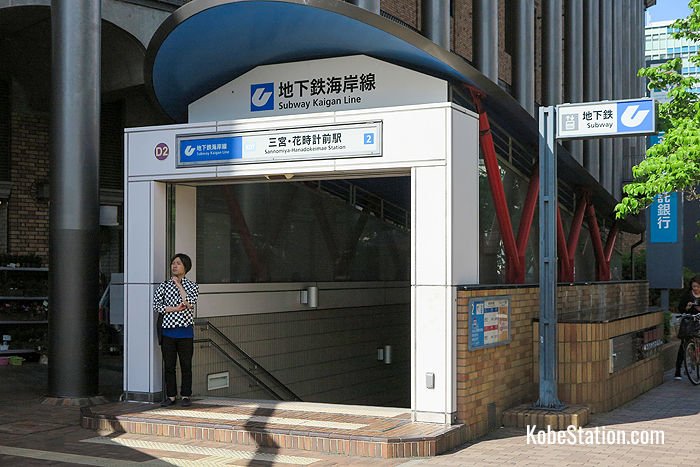
Sannomiya-Hanadokeimae Station
Sannomiya-Hanadokeimae Station
Sannomiya-Hanadokeimae Station is a short walk south of the main cluster of railway stations in Kobe’s Sannomiya district. This makes it easily accessible for stations on the JR Kobe Line, the Hanshin Main Line, the Hankyu Kobe Line, the Seishin-Yamate Subway Line, and the Port Liner.
Attractions near this station include:
Kobe City Hall Observation Lobby is located on the 24th floor of Kobe City Hall’s No. 1 Building. From here you can take in superb views overlooking the cityscape of Kobe with mountains to the north and Osaka Bay to the south. Because the lobby is open until late this is also a good spot to enjoy night views over the city. Entrance to the lobby is free and there is also a Korean restaurant and a café where you can get something to eat while enjoying the scenery. The lobby is open from 8.15 to 22.00 on weekdays and opens at 10.00 on weekends and holidays. The lobby is closed from December 29th to January 3rd and for occasional maintenance. This attraction is a 4 minute walk south of the station.
Kobe Lampwork Glass Museum displays roughly 2,000 pieces of ancient and modern items of glass artworks which have been crafted using the lampwork technique. Demonstrations of this technique are given by the staff and visitors can take part in a glass bead making workshop. There is also a shop where you can buy beautiful souvenirs. The museum is open from 10.00 to 19.00 (with last entry at 18.45) and is closed between December 31st and January 2nd. Admission is 400 ye n for adults and 200 yen for children of elementary and junior high school age. This museum is a 6 minute walk south of Sannomiya-Hanadokeimae Station.
Kobe City Museum has a permanent exhibition of art and artifacts which traces Kobe’s history as a center of international exchange between Japan and the world. The museum is open from 10.00 to 17.00 (with last entry at 16.30) and is closed on Mondays and from December 29th to January 3rd. The 1st floor historical exhibition is free to enter, while admission to the 2nd floor art collection costs 300 yen for adults, 150 yen for university students, and is free for children. This museum is an 8 minute walk from Sannomiya-Hanadokeimae Station.
Kyukyoryuchi-Daimarumae Station
This station is named partly after Kobe’s former foreign settlement which was located in this area between 1868 and 1899. “Kyukyoryuchi” means “old foreign settlement” while “Daimarumae” simply means “in front of Daimaru” because this station is very close to the Daimaru Department Store. Although the main area of the foreign settlement has now gone, Kobe still has a vibrant Chinatown called Nankinmachi which is very popular for its many authentic Chinese restaurants. Both Daimaru and Nankinmachi are a one minute walk from this station.
Train fare: 210 yen
Train time: 1 minute
Minato Motomachi Station
This station is a short walk from Kobe’s Meriken Park. This pleasant waterfront park has two main attractions. Kobe Port Tower is 108 meters high and has observation decks offering glorious views over the city and its harbor. There is also a rotating café on the 3rd floor. The tower is open from 9.00 to 21.00 between March and November and until 19.00 between December and February.
Kobe Maritime Museum has models and exhibits showing the history of Kobe as an international port city and also showing how ships and ports were built. The museum is open between 10.00 and 18.00 and closed on Mondays (or the following day if Monday is a national holiday) and during the New Year holidays (December 29th to January 3rd). Last entry to both the tower and the museum is 30 minutes before closing.
Admission to Kobe Port Tower is 700 yen for adults and 300 yen for children (elementary and junior high school age), while admission to Kobe Maritime Museum is 900 yen for adults and 400 yen for children. However, there is a discount combination ticket for both facilities which costs just 1,300 for adults and 550 yen for children.
Train fare: 210 yen
Train time: 3 minutes
Harborland Station
This station serves the Harborland commercial complex. This waterfront recreational area features shops, restaurants, a cinema, and a large Ferris wheel which is illuminated at night. There is also an Anpanman Museum, which is an interactive play area for small children featuring the popular anime super hero character, Anpanman. The museum is open from 10.00 to 18.00 (with last entry at 17.00) and closed for New Year’s Day and occasional maintenance. Admission costs 1,800 yen.
A 7 minute walk west of this station will take you to the tranquil grounds of Minatogawa Shrine. This shrine is built to commemorate the Battle of Minatogawa which was fought here in 1336, and it is dedicated to the spirit of the samurai Kusunoki Masashige. Kusunoki, who died in battle here, is famous for his brave loyalty to the Emperor Go-Daigo. Although located in the city center, the shrine has large peaceful grounds and several impressive buildings. A handicraft flea market is also held here on the first day of every month except January.
This station is a 2 minute walk from Kobe Station on the JR Kobe Line.
Train fare: 210 yen
Train time: 4 minutes
Chuo-Ichibamae Station
This station serves Kobe Central Wholesale Market. There are a large number of seafood restaurants and some specialist stores here which are open to the general public.
Train fare: 240 yen
Train time: 6 minutes
Wadamisaki Station
This station is convenient for the Noevir Stadium Kobe which is located in Misaki Park. This stadium is the home ground for the local professional football team Vissel Kobe and the rugby team Kobelco Steelers. The stadium is a 6 minute walk from this station.
Transfer here to the JR Wadamisaki Line.
Train fare: 240 yen
Train time: 8 minutes
Komagabayashi Station
This station is convenient for the Kobe Iron Man Three Kingdoms Gallery (Kobe Tetsujin Sangokushi Gallery). This is a small but colorful museum which is dedicated to the work of the local manga artist, Mitsuteru Yokoyama. This free museum is open from 12.00 to 17.00 and closed on Wednesdays and between December 30th and January 3rd. It is a 2 minute walk from the station.
Train fare: 280 yen
Train time: 13 minutes
Shinnagata Station
This station is a 3 minute walk from the gigantic Tetsujin 28 Monument in Wakamatsu Park. Tetsujin 28 is a giant robot character in a manga series first created by Mitsuteru Yokoyama in the 1950s that later became a popular anime TV series, and was marketed overseas as “Gigantor”. The 18 meter high, 50 ton statue is partly a monument to Mitsuteru Yokoyama and also a tribute to the recovery of the city after the 1995 Great Hanshin Earthquake.
Transfer here to the Seishin-Yamate Subway Line and to the JR Kobe Line.
Train fare: 280 yen
Train time: 14 minutes
Buying Tickets
Tickets can be bought from automatic ticket machines beside the ticket gates in each station. The ticket machines are operated with touch screens with English language guidance and are easy to use.
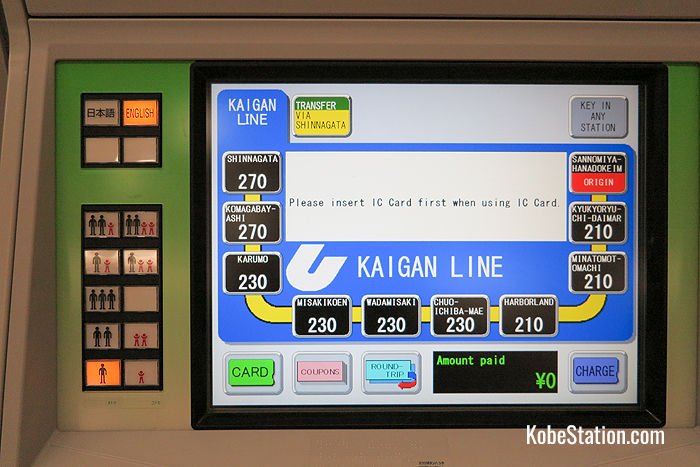
A ticket machine touch screen. The English language button is beside the screen on the left
Destinations with their fares are displayed on the touch screen. There are also fare charts with the same information in English and Japanese above the ticket machines.
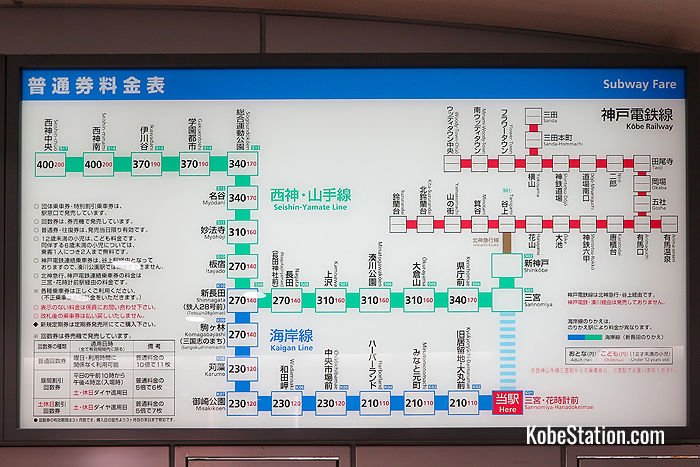
A fare chart above the ticket machines at Sannomiya-Hanadokeimae Station
To buy a ticket, put your money into the machine and then select your destination on the touch screen.
Useful Information
A number of discount passes are available for use on Kobe’s subway and bus systems. For details please visit the Kobe City Transportation Bureau website. A bilingual subway route map for Kobe can also be downloaded from the same website. To plan your journey use English language route finders like the Japan Transit Planner or Hyperdia.
Article and original photos by Michael Lambe. All rights reserved.
